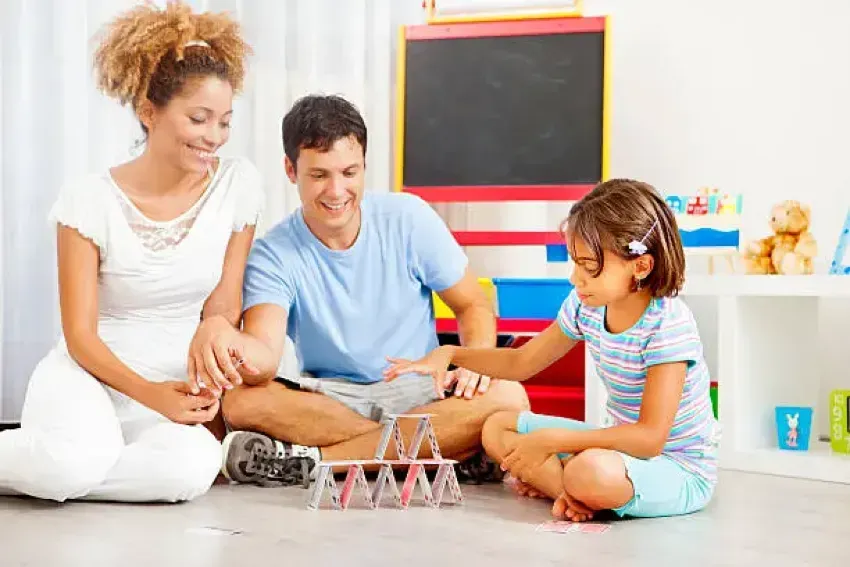Building Bonds at Home: Creating a Culture for Healthy Socialisation

Children’s very first “social classroom” is not the playground or preschool; it is the home. The way we talk, listen, and solve problems together within our family sets the stage for how our little ones will navigate friendships, classrooms, and the wider world.
When children feel safe, heard, and connected at home, they carry those same social skills into their everyday interactions. And the good news? Parents and caregivers can shape this culture intentionally; one routine, one conversation, and one teachable, playful moment at a time.
Why Socialisation Starts at Home
Psychologists remind us that young children learn through imitation. They do not just listen to what we say as efficiently as they absorb how we treat others and how we respond to challenges. Research consistently shows that children raised in emotionally supportive, socially responsive homes develop stronger peer relationships and fewer behavioral problems later on¹.
That means creating a family “culture” where kindness, respect, helpfulness, empathy, and cooperation are more than just rules; they are lived out daily.
The F-A-M-E
To make this practical, let’s use a simple guide: F-A-M-E. It highlights four building blocks of a healthy home culture for socialization:
- F: Family Modeling – Show the behaviors you want to see.
- A: Affection & Affirmation – Express warmth and encouragement often.
- M: Meaningful Interaction – Create chances for conversation, storytelling, and teamwork, especially in relation to the healthy, positive values we want to inculcate
- E: Everyday Practice – Build these values into routines so they stick.
Usually, every Tuesday night is spaghetti night. Everyone sits around the table, but instead of hurrying through the meal, Mom starts a simple game: “Highs and Lows.” Each family member shares one good thing and one tricky thing about their day.
- A six-year-old might say: “My high was finishing my puzzle. My low was my friend Joan, who did not play with me at recess.”
- A parent might share honestly too: “My high was hearing you sing in the car. My low was being stuck in traffic.”
What’s happening here?
- Children are learning turn-taking and active listening.
- They’re practicing empathy: noticing how someone else might feel.
- Parents are modeling that it is okay to share challenges, not just achievements.
This tiny ritual becomes a powerful, repeatable social skill-builder.
The Sibling Impasse
Two siblings are fighting over who gets the red crayon. Voices rise, and frustration mounts. Instead of stepping in with an immediate solution (“Just give it to your brother!”), Dad kneels to their level, makes eye contact, and guides them through a pause-and-problem-solve routine:
- Pause – “Let’s take a breath and calm our voices.”
- State Needs – Each child says what they want: “I want the red crayon because I like it.” “I want it because I’m coloring fire.”
- Think Options – Together brainstorm solutions: “Maybe take turns, or mix colors, or find another red.”
- Agree and Try – The children pick one and move forward.
This might take longer than simply handing over the crayon, but it teaches conflict resolution, respect for others’ perspectives, and creative problem-solving.
Why This Matters
Home is the first practice ground for lifelong social skills. The repetition of these small experiences helps wire children’s brains for empathy, patience, and cooperation. Research from the National Scientific Council on the Developing Child shows that early experiences in responsive, supportive environments shape not only social skills but also brain architecture itself².
By practicing F-A-M-E—Family Modeling, Affection & Affirmation, Meaningful Interaction, and Everyday Practice—families essentially prepare children with a social “toolkit” they will use long after childhood.
Parents Remember
- Narrate kindness: “I noticed how you gave your toy to your sister; that was thoughtful.”
- Schedule connection: Even 10 minutes of undistracted play communicates in a simple form, “You matter.” Example: rub your child’s head for a few seconds
- Use routines: Turn chores into teamwork (“Let’s fold laundry together”) to normalize cooperation.
- Show mistakes are okay: Model apologizing and making amends when you slip up.
Family Activity
Here’s one to try tonight: The Compliment Circle.
- Gather the family in a circle (or around the table), during dinner time or after family prayers
- Each person gives a compliment to the person on their right.
- Keep it simple: “I like how you built your blocks,” or “You make me laugh.”
This activity takes less than five minutes but builds warmth, affirmation, and joy. This is the kind of “home culture” that strengthens socialisation.
Parents, with these simple, consistent steps, you can cultivate a home culture where kindness, empathy, and connection will flourish. When children practice those skills at home, they will carry them confidently into the world.
Footnotes
- Rose-Krasnor, L. (1997). The Nature of Social Competence: A Theoretical Review. Social Development, 6(1), 111–135.
- National Scientific Council on the Developing Child (2004). Young Children Develop in an Environment of Relationships: Working Paper No. 1. Center on the Developing Child, Harvard University.